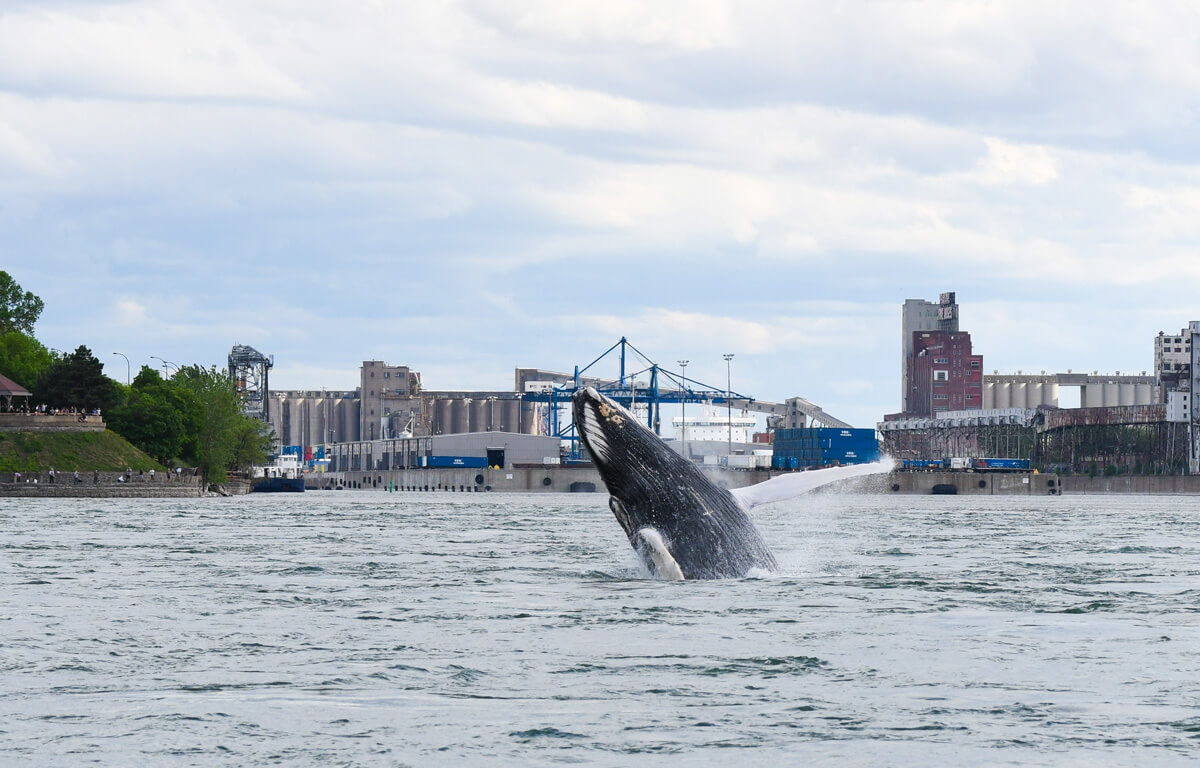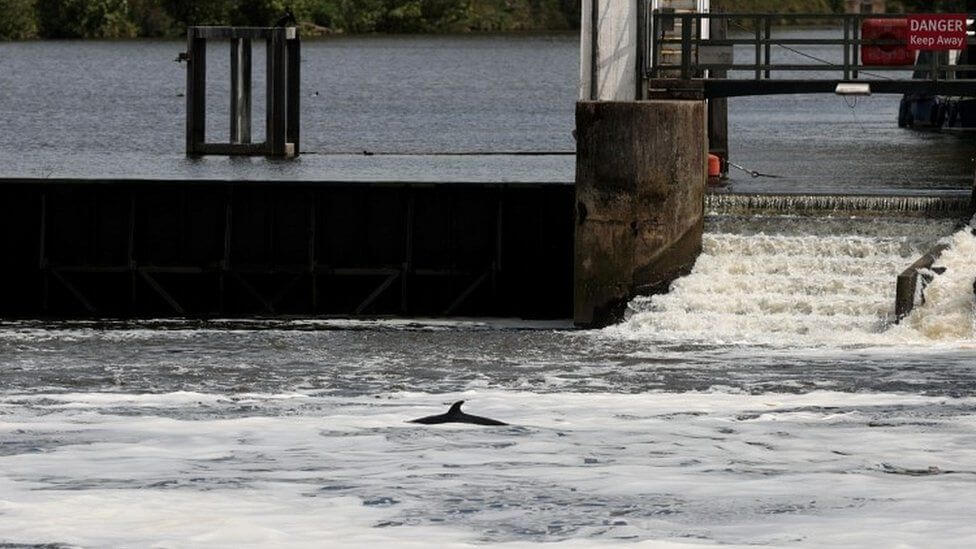It left millions astonished, concerned, dazzled and sensitized, even as the province was under lockdown. The juvenile (2 to 4 years old) female humpback observed between Québec City and Montréal from May 24 to June 9, 2020 created quite a frenzy. The presence of this whale outside its natural habitat generated considerable public interest, raised significant conservation issues and raised many a question within the scientific community. One year after this unusual foray was first reported to the Marine Mammal Emergencies hotline (1-877-722-5346), what are the key takeaways?
Major mobilization in the midst of a pandemic
In late May 2020, Quebec was still struggling with the first wave of the COVID-19 epidemic and experiencing an unprecedented lockdown. It is in this context that the first report of the humpback was received from a fisherman near the bridges in Québec City. The Quebec Marine Mammal Emergency Response Network quickly initiated measures to raise awareness amongst the general population and users of the St. Lawrence to reduce the risk of collision and had to request special authorizations to dispatch its staff at a time when interregional travel was prohibited. By the time the cetacean reached Montréal, nearly a hundred people were already collaborating on managing the situation: Coast Guard officers, veterinarians, specialists in marine mammal response, humpback whale experts and police officers implemented measures, surveillance, outreach, and maritime and recreational traffic management in the vicinity of the whale. Significant collaboration with the media also made it possible to diffuse clear and up-to-date information on the situation. This whale’s stay did not have a happy ending, however, as she died rather suddenly. A number of questions remain unanswered regarding this individual’s life and death, as well as her species in general. For a complete recap of the key moments in managing the presence of this whale in an urban environment, click here.
Sometimes surprising questions from the public
The Quebec Marine Mammal Emergency Response Network and its partners from here and around the planet elected not to attempt to frighten or move the animal for a number of reasons, including the whale’s own safety, but first and foremost because the whale had gotten here on its own and was not physically hindered from leaving on its own. In large mammals, forced displacements or relocations are rarely effective, and there is a high risk that they will quickly return to the same location. In this sense, the best chance of success is to minimize the risk of an incident during the animal’s stay and to let it leave when it is ready.
For the public, watching the whale brought much excitement, but was also a source of concern. Several individuals offered suggestions to the Network, some ideas that had already been considered by experts, others a bit more fanciful. These suggestions, all of which were based on a desire to come to the animal’s aid, demonstrate the importance of connecting the public to nature and whales so that they can understand the issues associated with the measures they are proposing. The idea of making a line of krill or fish all the way to Tadoussac is simply not an option or even possible (acclimation of the whale to humans, excessive quantity of fish or krill needed, whales’ ability to go long periods without eating, aquatic environment unconducive to creating a “line” of food, etc.). Erecting a fence in a natural environment is not advisable either, in addition to being problematic for all other species as well as navigation. Considering the size of the whale, it was not possible to use a helicopter to transport it. Nor is towing the whale by boat a good idea, given the risks for the animal. What could have been done – though not without risk – would have been to track the whale using a suction cup tag, which could have somewhat further reduced, but not completely eliminated, the chances of collision. A number of other suggestions were offered to QMMERN coordinator Robert Michaud in this discussion moderated by Montréal’s Cœur des Sciences cultural centre. You can hear his answers here.
A (not so) unique case
Ever since this humpback whale journeyed far up the St. Lawrence, several other cases of stray whales visiting an estuary have made headlines around the world. A beluga ended up in California, thousands of kilometres from its normal range, a minke whale got itself trapped in England’s River Thames, a fin whale washed up in the Dee Estuary in Wales, three humpback whales swam up a river in Australia, etc.
In a few cases, techniques to get these whales turned around were attempted without success. The majority of cases resulted in the animal’s death. What motivates whales to explore? Most of the time, these vagrants are young individuals, perhaps inexperienced or searching for new territory and possibly not in the best of shape to begin with. To learn more about what can cause a whale to set out exploring, read this article.
Conservation as a legacy?
Has the humpback’s journey helped the public better understand the issues of sharing the St. Lawrence, such as the challenging coexistence of maritime traffic with whales and their essential activities? Since witnessing this whale’s acrobatics, are people trying a little harder to minimize their impact on the environment in order to improve the ecosystem for other members of its species? Will we see an uptick in marine biology students over the next few years? The legacy of the humpback whale has yet to be quantified, but it is already being felt in the enthusiasm for whales in Quebec.







